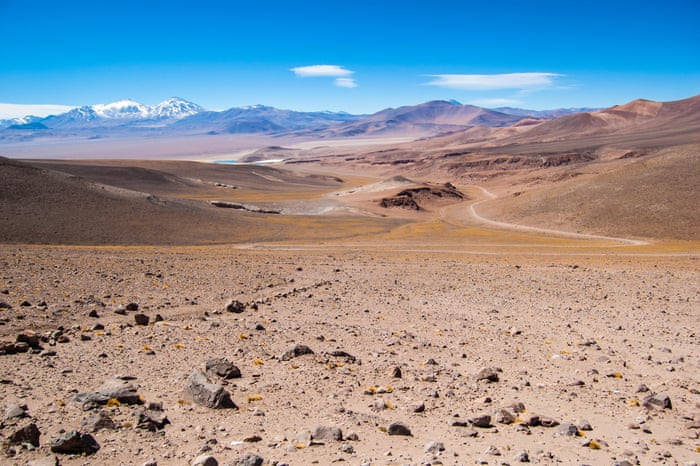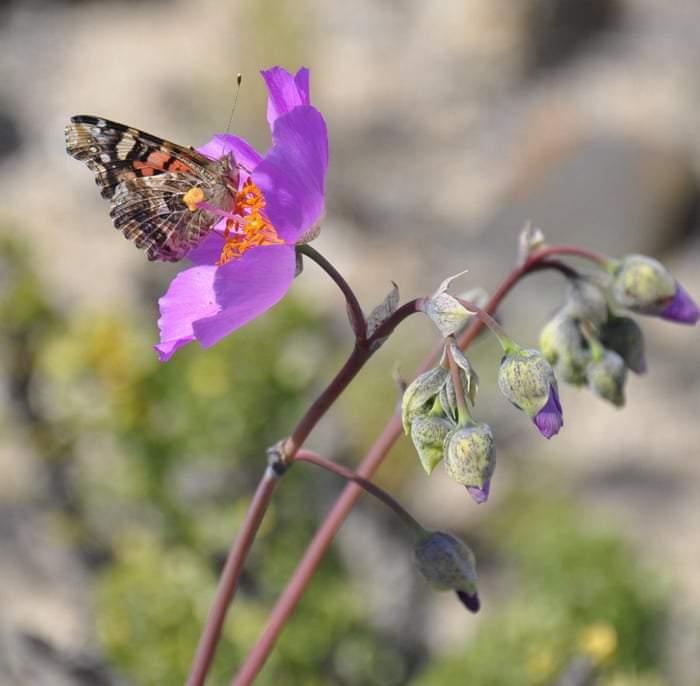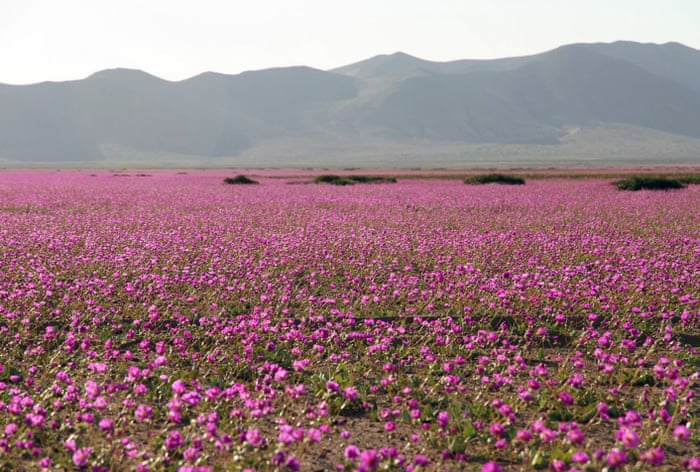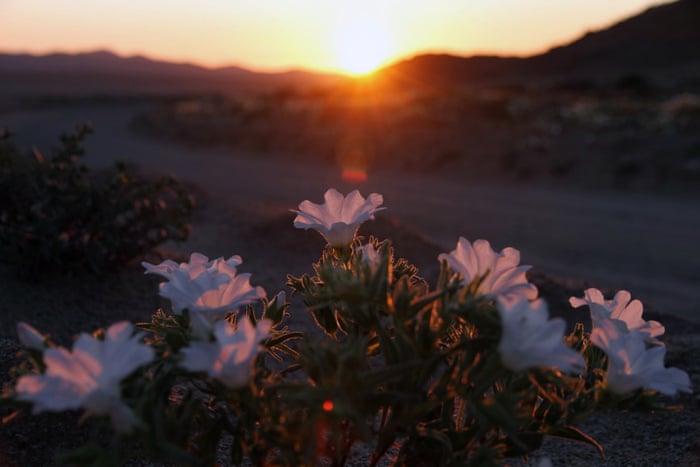©http://ottersandsciencenews.blogspot.ca/. Unauthorized duplication of this blog's material is prohibited. Excerpts and links may be used, provided that full credit and link is given to Otters and Science News Blogspot. Link to this post: http://ottersandsciencenews.blogspot.ca/2015/11/beautiful-flowers-everywhere-on-driest.html - Thank you for visiting my blog.
~~~~~~~~~~~~~~~~~~~~~~~~~~~~~~~~~~~~~~
~~~~~~~~~~~~~~~~~~~~~~~~~~~~~~~~~~~~~~
When rain falls on the world's driest desert this is the jaw-dropping result (and this year's display is the most spectacular in 18 years)
Continue reading and see additional images, including those of the Utah desert in bloom.
You may imagine the world's driest desert to be barren and lifeless - but during the rainy season a magical transformation brings the area to life.
Every five to seven years the Atacama desert in Chile becomes adorned by a stunning pink carpet, which makes the usually arid landscape burst with colour.
This year's display is said to the most extraordinary blossoming of the past 18 years, and is expected to draw 20,000 tourists to the area.
Experts say that heavy rains unleashed by a storm in northern Chile in March are behind this year's particularly magnificent bloom, which has miraculously occurred twice in one year.
'The intensity of blooms this year has no precedent,' Daniel Diaz, the National Tourism Service director in Atacama, told the EFE news agency. 'And the fact that it has happened twice in a same year has never been recorded in the country's history. We are surprised.'
The Atacama desert, which spans from Chile to Peru, is made up mostly of salt lakes, sand and felsic lava and receives an average rainfall of just 15mm (0.59 in) per year.

A few areas get as little as 1mm and some weather stations have never had any at all.

A few areas get as little as 1mm and some weather stations have never had any at all.
It is so arid that even mountains reaching as high as 22,589 ft are completely free of glaciers.
Motorists admire the unusual sight of the Atacama desert in bloom.




Other deserts bloom too
The Atacama desert is not the only place that is completely transformed in the rainy season.
Oman's amazing overnight metamorphosis from arid desert to breathtaking rainforest changes a huge tract of land into a picturesque emerald haven for locals and animals - including hundreds of camels.
The transformation happens for a few months each year and sees temperatures fall from 50 to 20 degrees overnight. The Green Pool in Wadi Shab, which can be found among Oman’s desert canyons, has its water coloured by limestone springs
The once-a-year sensation, which is known as the Salalah Khareef, or the Salalah Monsoon, takes place for three months a year, from the end of July to the beginning of September, and sees average temperatures drop from a scorching 50 degrees to a cool 20.
The oasis is situated on a 155 mile stretch of land - similar to the length of Jamaica - and at its deepest, the monsoon only extends about 18 miles from the shore.

The Utah desert usually has an arid and unforgiving landscape, but if you catch it after a rainy season it is alive with an extraordinary explosion of colour and life
The Utah desert usually has an arid and unforgiving landscape, but if you catch it after a rainy season it is alive with an extraordinary explosion of colour and life
These Utah blooms are short-lived to conserve moisture, and the rare sight attracts tourists who flock to witness their beauty
The pretty plants in the American desert have evolved to make the most of their challenging environment
Sources
http://www.dailymail.co.uk/travel/travel_news/article-3294865/Blooming-marvellous-rain-falls-world-s-driest-desert-jaw-dropping-phenomenon-takes-place-year-s-display-spectacular-18-years.html
http://www.theguardian.com/environment/gallery/2015/oct/30/flowers-bloom-in-the-atacama-desert-in-pictures
********************************************************************
No comments:
Post a Comment
Thank you for visiting my blog. Your comments are always appreciated, but please do not include links.